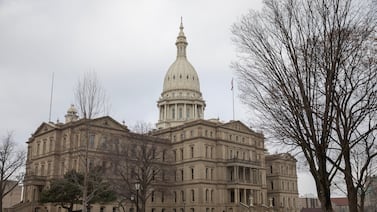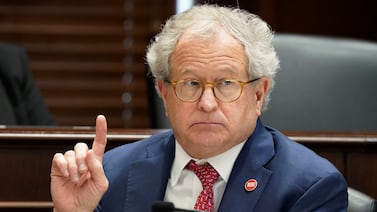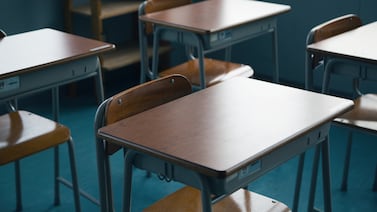Sign up for Chalkbeat Tennessee’s free daily newsletter to keep up with Memphis-Shelby County Schools and statewide education policy.
Peabody Elementary School is closed until next fall due to issues with mold and to allow time for other building upgrades, Memphis-Shelby County Schools officials told families Friday.
School officials first located mold in the Midtown building in September, initially prompting a dayslong closure. When that wasn’t long enough to fix the problem, the 323 students were relocated to two nearby schools.
Relocating for the rest of the school year “is the best and least disruptive option as we restore this historic gem,” MSCS wrote in a letter to families, which was shared with the press.
Peabody students in K-5 will continue going to class at Middle College High School, which is located about a mile away from Peabody. (Until spring 2022, Middle College High also housed Maxine Smith STEAM Academy, which relocated permanently to East High School to alleviate overcrowding.)
Pre-kindergarten students from Peabody will continue going to W.H. Brewster Elementary, about three miles away.
Peabody Elementary will get some renovations in addition to the mold remediation, MSCS told school families Friday. When students return for the 2024-25 school year, the century-old building will have upgraded floors, ceiling tiles, duct work, and lighting, plus repaired brick and windows.
Upgrades could be coming to Middle College High, too, officials said. Constructed in 1930, the building is home to a sought-after optional program in partnership with neighboring Christian Brothers University.
This marks the second consecutive year that some MSCS students have had to relocate midyear due to issues with aging buildings.
Last fall, students at Cummings K-8 Optional School had to relocate after the school’s library ceiling partially collapsed just days into the new school year. The structure that houses the library was built in 1930. The building has since received some additional upgrades, but has yet to reopen. Students remain relocated at LaRose Elementary School.
More school building upgrades will be on the way as district leaders work with a new committee of elected officials and leaders in the nonprofit sector to develop a comprehensive plan to address facility needs.
Last month, board members approved funds for a new assessment that will provide updated data about each building. Interim Superintendent Toni Williams called the project a “massive undertaking.”
Chalkbeat Tennessee Bureau Chief Tonyaa Weathersbee contributed.
Laura Testino covers Memphis-Shelby County Schools for Chalkbeat Tennessee. Reach Laura at LTestino@chalkbeat.org.






